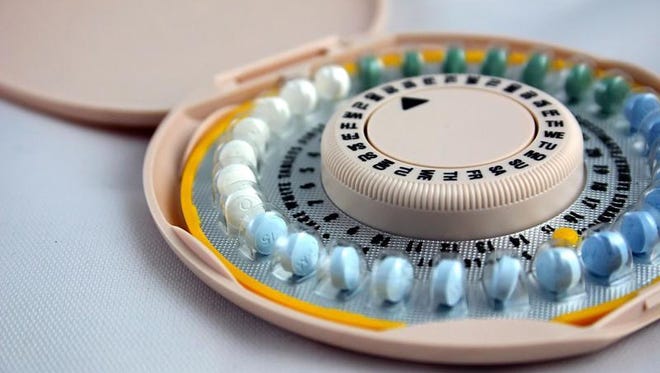After years of hovering slightly under 1 million residents, Delaware has surpassed that milestone − but just barely, according to U.S. Census Bureau estimates published earlier this year.
The government estimated in July of this year that in July 2021, Delaware had 1,003,384 residents. Census bureau data lags by about a year.
While Delaware’s overall population growth has remained steady at an average of 1% per year since 2010, adults 65 and older have seen the fastest growing numbers, with that population increasing 55% in the 11-year period. In contrast, the 35 to 49 age group declined the most, dropping 4.2% in the same timeframe.
Currently, the 50 to 64 age group makes up the largest share of Delaware’s population − 20.5%. The 65 and up age group comes in close second, however, making up 20.1% of the state’s population.
Following these two groups, Delaware’s age group percentages are: 20 to 34 (18.6%); 5 to 19 (18%); 35 to 49 (17.5%); 0 to 4 (5.3%).
Though adults ages 50 to 64 still account for the largest percentage of the state’s population, the rapid growth of the 65-plus age group comes as no surprise given the trend is also being seen nationally, the U.S. Department of Health and Human Services’ Administration for Community Living found.
According to a webpage updated in May − prior to the Census Bureau’s July release of 2021 data − there were 54.1 million people age 65 and older in the U.S. in 2019, up from 39.6 million in 2009. That represents a 36.6% increase in that age group.
By 2040, the government expects the 65 and older population to reach 80.8 million, and 94.7 million by 2060.
Why is this age range growing?
There are several reasons, both globally and in the U.S., why older adults make up a larger share of the population.
Around the world, life expectancy is increasing, according to the U.S. Department of Health and Human Services’ National Institutes of Health. Most countries, including developing countries, show “a steady increase in longevity over time,” though it remains unclear how much more life expectancy will increase.
Coupled with this is a general decline in birth rates, both nationally and worldwide.
Beginning in the U.S. in the late 1960s, families began getting smaller, according to the Population Reference Bureau, a Washington, D.C.-based nonprofit that collects statistics for research focused on the environment and the health and structure of populations.
During the baby boom, the total fertility rate − or the average number of births women will have in their lifetime − peaked at more than 3.5. By the mid-1970s, the rate had dropped to 1.7, which had been the lowest level ever recorded in the U.S. until recently.
According to a May 2021 article by the Population Reference Bureau, in 2020, the total fertility rate dropped to 1.64, the lowest level ever in the U.S.

While this is concerning for a myriad of reasons, researchers with the University of California, Princeton University and Northwestern University recently published a working paper − a research paper that has either not yet been peer-reviewed or published in an academic journal − based on data from 2015 to 2021 that found that there was a slight “baby bump” during the pandemic.
THE CONCERN, EXPLAINED:Why the US birthrate hitting a 32-year low could become a big problem
Did the pandemic increase our population?
The paper’s authors found that though U.S. birthrates declined slightly as pandemic lockdowns were implemented in early 2020, the rates rose again last year, culminating in a net increase above the pre-pandemic trend.
The decrease at the beginning of lockdowns was largely due to fewer female immigrants coming into the U.S. and having children here, while the increase was largely from women under 25 having babies earlier and women with a college education “who were more likely to benefit from working from home,” the study found.
“This 2021 ‘baby bump’ is the first major reversal in the U.S. fertility rates since the 2007 Great Recession and was large enough to reverse two years of declining fertility rates,” the authors wrote. “Combining the modest 2020 fertility decline and the 2021 baby bump, the COVID-19 pandemic led to a net increase in births among U.S.-born mothers of around 46,000 children.”
While the paper’s authors did not look at national data for 2022, they did examine California birth rates between January and August of this year. They found in that state, “which tracks the overall U.S. data closely,” births “remained elevated at a level similar to 2021.”
The authors suggested that both improved child care and increased work-from-home flexibility “might beassociated with higher future fertility.”
EXPANSION OR NOT?:Sussex’s planned Coral Lakes housing development adds another chapter: 2 new appeals filed
It remains to be seen in coming years whether Delaware will reflect the national “baby bump” that researchers found, given the share of children ages 0 to 4 decreased at a faster rate from 2020 to 2021 (5.5% to 5.3%) compared to 2018 to 2019 (5.7% to 5.6%) and 2019 to 2020 (5.6% to 5.5%).
Still, there’s some hope. In Sussex County, the state’s most rapidly growing county − which saw an increase in population of 3.6% between 2020 and 2021 − the share of children ages 0 to 4 decreased at a slower rate (0.01%) than the rest of Delaware.
Got a story tip or idea? Send to Isabel Hughes at ihughes@delawareonline.com. For all things breaking news, follow her on Twitter at @izzihughes_